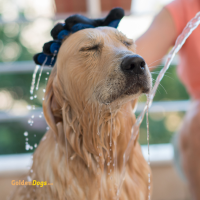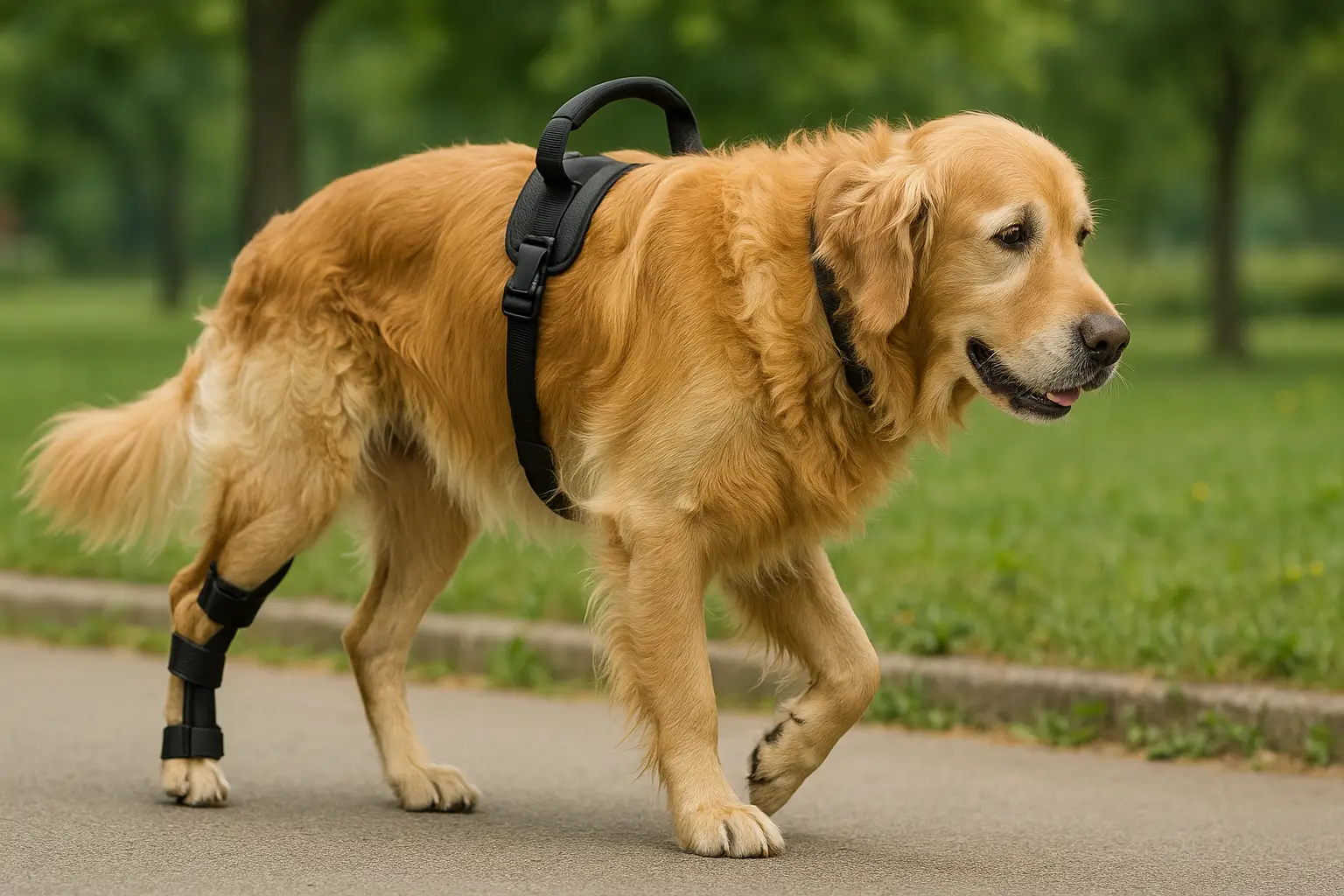

Canine Hip Dysplasia (CHD) is one of the most common and impactful developmental orthopedic diseases in dogs, with especially high prevalence in medium- and large-breed pets. Among these, the Golden Retriever faces significant risk because of a complex interplay of genetic heritage, body size, and rapid growth patterns. CHD’s hallmark is an abnormally formed hip joint that leads to joint laxity, pain, and ultimately crippling osteoarthritis, greatly diminishing a dog’s quality of life.
This report is an evidence-based guide for conscientious Golden Retriever owners and breeders. CHD is multifactorial: while genetics set the stage, environmental factors such as nutrition, weight, and exercise determine how severely the disease is expressed. Proactive management—started in the earliest stages of puppyhood—is the strongest strategy for mitigating the condition. By explaining the pathophysiology of CHD, listing early warning signs, and outlining preventive nutrition and exercise blueprints, this guide aims to shift care from reactive pain control to proactive preservation of joint function, allowing Goldens to enjoy long, active, and comfortable lives.
Normal hip vs. dysplastic hip
The healthy canine hip is a classic ball-and-socket joint: the spherical femoral head (“ball”) fits deeply into the acetabulum (“socket”), both surfaces covered by smooth articular cartilage lubricated with synovial fluid. This tight congruence distributes forces evenly across the joint.
In a dysplastic hip the femoral head sits loosely in a shallow socket, allowing partial dislocation (subluxation) during movement. Abnormal motion focuses forces on small areas, eroding cartilage, stretching the joint capsule, and creating microfractures along the acetabular rim. Over time the body tries to stabilize the joint by laying down new bone (osteophytes) and thickening the capsule—classical osteoarthritis.
The developmental cascade
All puppies are born with anatomically normal hips. Disease changes begin silently in the first weeks of life. Radiographic laxity can be visible by eight weeks, microscopic cartilage damage by five months, and remodeling soon after. Because outward pain is minimal early on, substantial irreversible damage can occur before any limp is noticed. Waiting for obvious lameness is therefore a flawed strategy—early screening and prevention are essential.
Multifactorial cause: genetics meets environment
CHD is polygenic and multifactorial. A dog must inherit predisposing genes, yet the severity of disease is profoundly shaped by non-genetic factors—chiefly nutrition, growth rate, body weight, and exercise style. Rapid growth, excess weight, and inappropriate exercise magnify a genetic tendency, whereas lean growth and joint-safe activity reduce clinical impact.
| Sign | Description |
|---|---|
| “Bunny hop” gait | The puppy runs or climbs stairs moving both hind legs together to reduce hip motion. |
| Swaying or weaving walk | Loose, wobbly movement of the hindquarters. |
| Reluctance to play, jump, or climb | Hesitation before furniture or car entry; tires quickly. |
| Difficulty rising | Stiffness after rest that eases with a few steps. |
| Altered stance | Hind legs tucked under the body to shift weight forward. |
| Odd sitting posture | One leg splayed out or knees turning inward. |
| Sign | Description |
|---|---|
| Clicking or popping (“crepitus”) | Audible or palpable grinding as the dog moves. |
| Intermittent or chronic lameness | Worsens after heavy exercise. |
| Thigh-muscle atrophy | Rear leg muscles shrink; shoulders grow disproportionately as weight shifts forward. |
| Behavior changes | Irritability, withdrawal, reduced enthusiasm due to chronic pain. |
Dogs are stoic: many never vocalize pain. Subtle behavior or gait changes are therefore critical clues.
Keeping a Golden lean is the single most effective, least expensive joint-protection tool. Excess weight both overloads hips mechanically and increases systemic inflammation. Learn the 9-point Body Condition Score (BCS) and aim for a 4/9–5/9 (performance dogs often thrive at 4/9).
Home BCS checklist
Large-breed puppy formulas control calories, fat, calcium, phosphorus, and their ratio, promoting slow, steady growth and proper mineralization. Never add separate calcium to a complete diet.
| Nutrient (dry-matter basis) | Ideal range | Why it matters |
|---|---|---|
| Protein | 22–28 % | Builds muscle to support joints. |
| Fat | 10–25 % | Energy source; excess drives rapid growth. |
| Calcium | 0.7–1.2 % | Oversupply linked to skeletal malformations. |
| Phosphorus | 0.6–1.1 % | Works with calcium; the balance is vital. |
| Ca:P ratio | 1.1–1.5 : 1 | Maintains hormonal regulation of bone growth. |
A puppy needs muscle-building movement without concussive impact on soft growth plates. The first 18–24 months are critical.
| Age | Do this | Use with caution | Avoid |
|---|---|---|---|
| 2–6 mo | Free play on grass, short sniffy walks, puzzle toys, gentle swimming intro | Brief, gentle fetch on grass | Forced running, repeated stairs, any height-jumping |
| 6–12 mo | Longer leash walks on soft ground, swimming, hill walking, sit-to-stand drills | Low jumps, controlled fetch | Repetitive aerial catches, pavement running |
| 12–18 mo | Gradually tougher hikes, swimming, varied-terrain walks, advanced training | Casual jogging on grass | High-intensity sports, bike sprints |
| Adult | All low-impact work, hiking, dock diving, recreational agility | Hard-surface distance running | Anything causing post-exercise lameness |
Proprioception and balance—sideways walking, balance-disc work, and controlled sit-to-stand drills build stabilizing muscles. Mental workouts (puzzle feeders, scent games) tire a puppy without joint stress.
| Feature | OFA | PennHIP |
|---|---|---|
| Method | Single hip-extended X-ray | Three X-ray views (distraction, compression, extended) |
| Metric | Subjective score (Excellent, Good, Fair, etc.) | Objective Distraction Index (DI) |
| Earliest age | Preliminary view possible before 24 mo; final at 24 mo | Reliable from 16 weeks |
| Predictive power | Limited for future OA | Highly predictive; DI > 0.3 signals increased risk |
| Database completeness | Voluntary submissions (can omit bad results) | Mandatory submission of all films |
| Cost & access | Lower; any vet with X-ray | Higher; requires certified PennHIP provider |
Breeders who use PennHIP show exceptional commitment to reducing CHD in their lines.
Genetics may “load the gun,” but daily owner decisions about food, weight, and activity “pull—or withhold—the trigger.” Armed with knowledge and proactive habits, Golden Retriever guardians can transform CHD from an inevitable decline into a story of resilience, comfort, and enduring companionship.